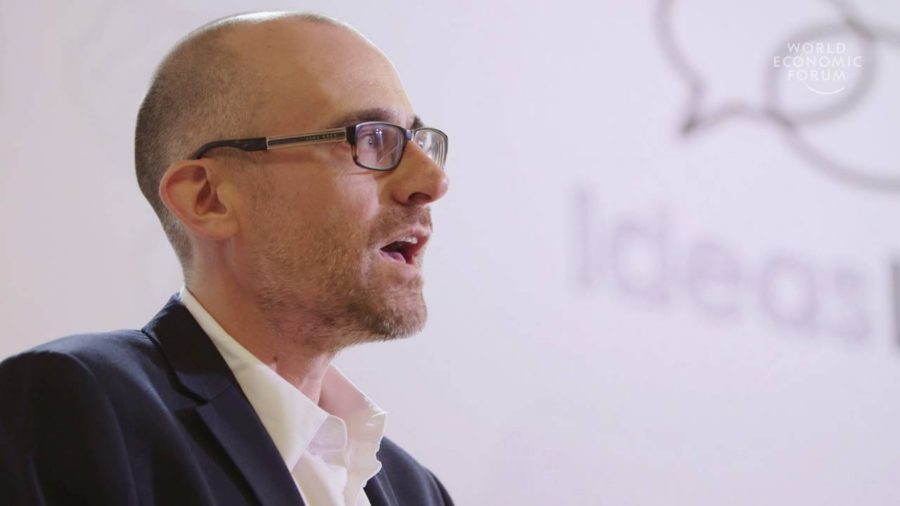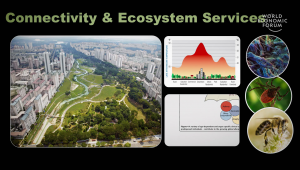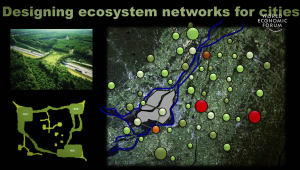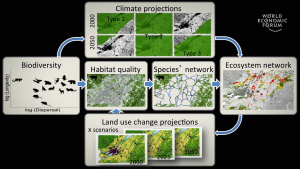We are living in the century of urbanization. By 2050, 70% of the world’s nine billion people will be living in cities.
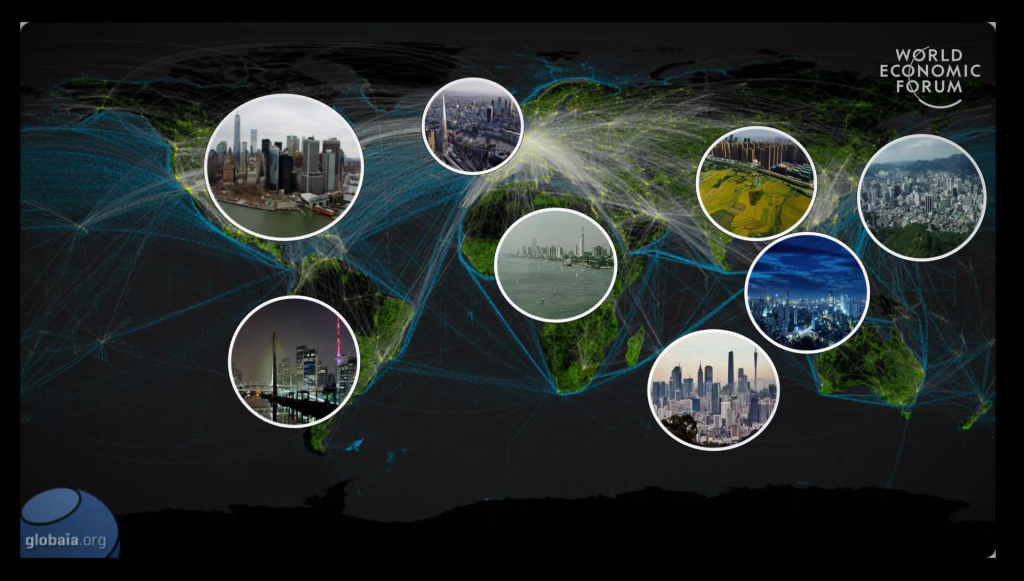
Cities form a vast global network connected by flows of energy, food, information. This global network is the challenge of the 21st century. How do we make more sustainable cities, with smaller ecological footprints and more equitable human wellbeing?
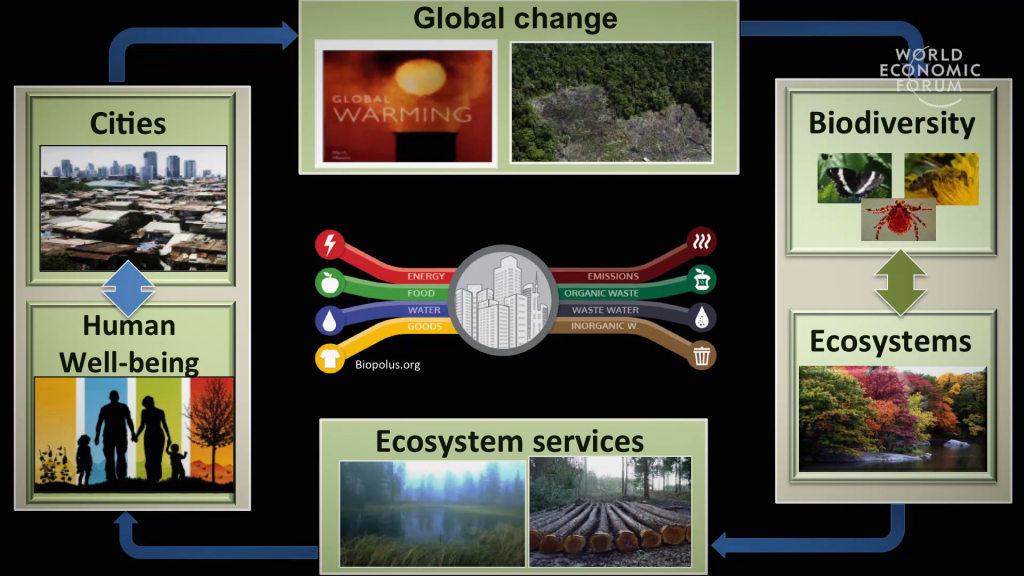
Today I want to stress the linkages between cities and ecosystems. Cities rely upon the goods and services produced by biological diversity embedded in ecosystems. These benefits are called ecosystem services. But, as cities draw upon these resources not only do they clear the land and transform the landscape, but they also fragment and disconnect ecosystems.
This loss of ecological connectivity erodes biological diversity and degrades the very ecosystem services we need for sustainable cities. This happens at a global scale; there are global teleconnections between cities and landscapes.
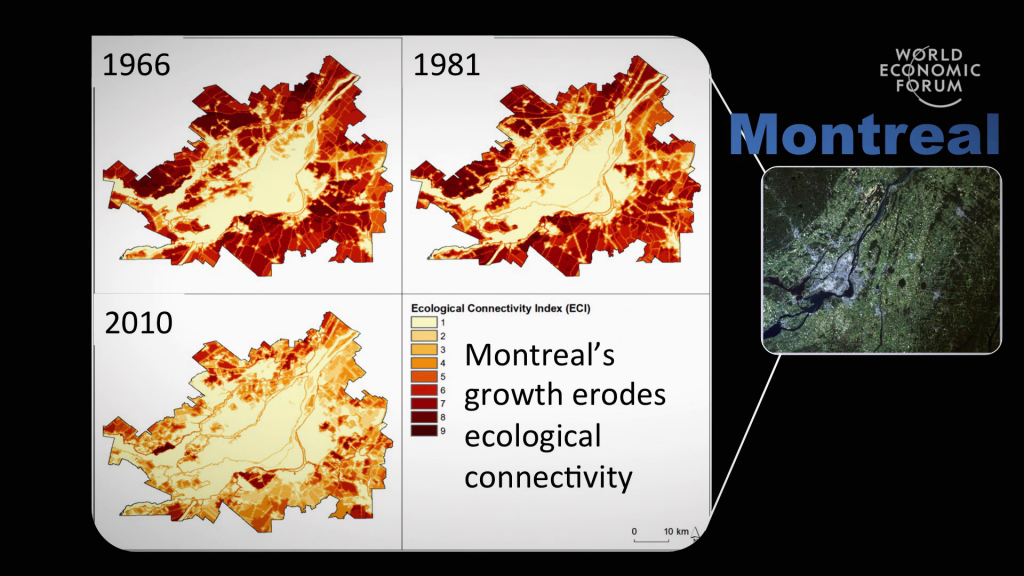
But it also happens at the scale of a city. So, here I am showing you analysis we did of how we ecological connectivity (shown in red here) has been eroded over fifty years for the city of Montreal. So you can see this red patent is dissipating. Patterns of growth like this are common the world over, and they are diminishing the contribution of ecosystems to city sustainability.
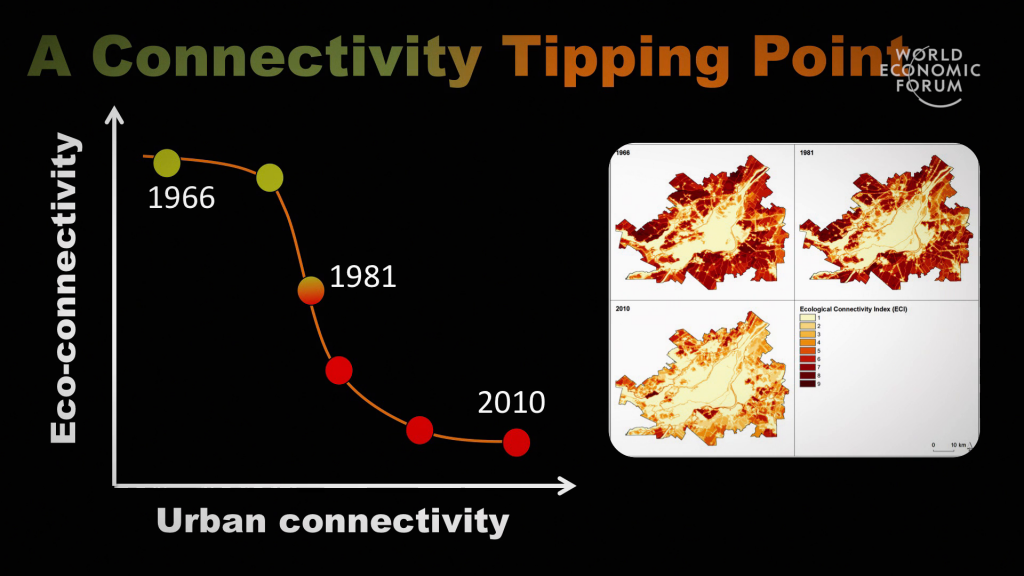
What we have here is a nonlinear relationship between urban growth and urban connectivity, and ecological connectivity on the other hand. It describes a tipping point, a nonlinearity in which beyond a certain threshold of urban connectivity, we lose the ecosystem’s connected properties. We need science that can slow and even reverse tipping points like this.
My research group at McGill University has used theory and experiments in the lab and the field to demonstrate how disconnecting ecosystem networks erodes diversity, limits productivity, and affects their adaptability.
But we can use network size to reconnect them. And if we reconnect them, we can restore many of these properties in time. At the scale of entire cities, we’re collecting data to show how ecosystems embedded in cities like Singapore affects air quality, urban heat extremes, and biological diversity and how it mediates processes like pollination, pest control, and the microbes that affect the wellbeing of our very immune systems.
Back in 2009, I received a remarkable request from the Quebec government. They asked if I would apply my research to the design of an ecological network for Montreal and the region—the 27,000 square kilometer region—around it. You can imagine that was a little bit daunted by the scale of this request. I hesitated. But after some hesitation, I realized that I have to do it. I think network science is both profound and practical.
So how did we do that? We combined biodiversity science and network science, and many different land cover data on habitat quality, ecosystem quality, and the needs of many species. And then we combined projections from regional climate models and our own land use change models to assess how connectivity has changed in the past, how it is today, and how it will be in the future.
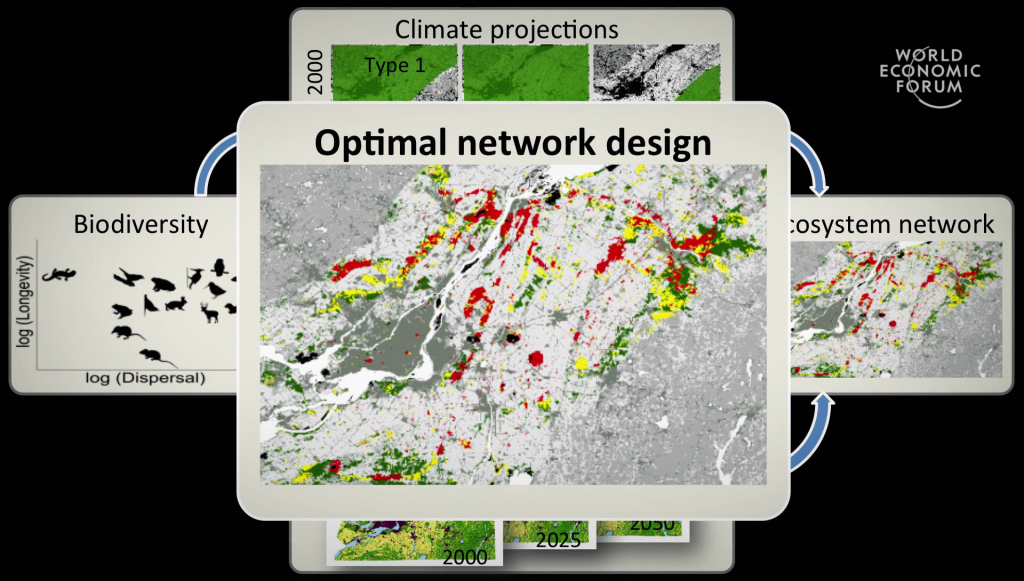
Our methodology allows us not only to identify connectivity, but also estimate the contribution of each ecosystem to the connectivity of the whole system. So we have like a weighting. Which fragments are more important or less important to the connectivity and the contribution of services to the whole.
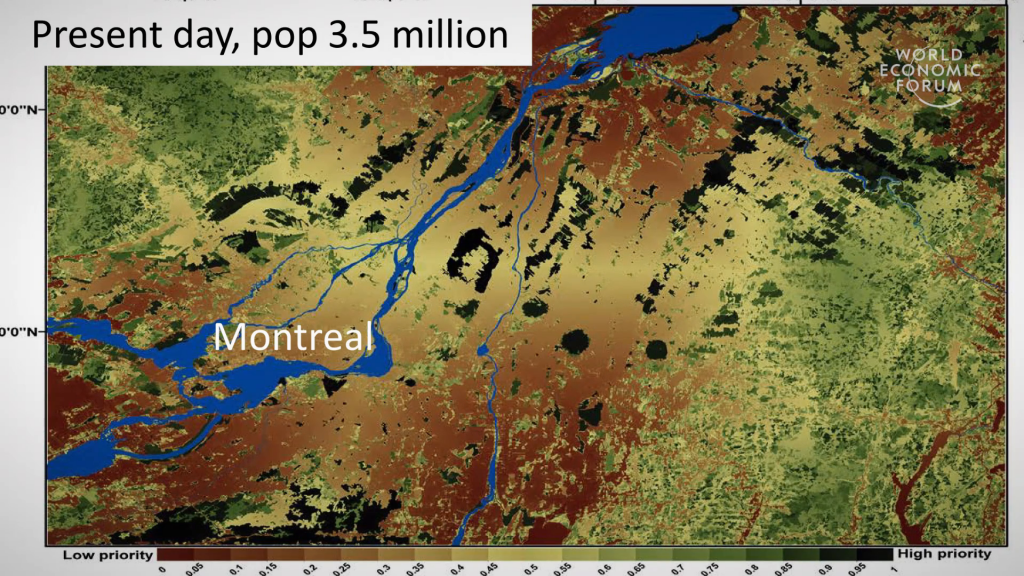
So, here I’m showing you one such map. The resolution is 30×30 meters, and I’m showing you the contribution of every pixel to the connectivity of the region’s network. And in dark green you see the ecosystems of high value, high connectivity. And zones in red of low connectivity.
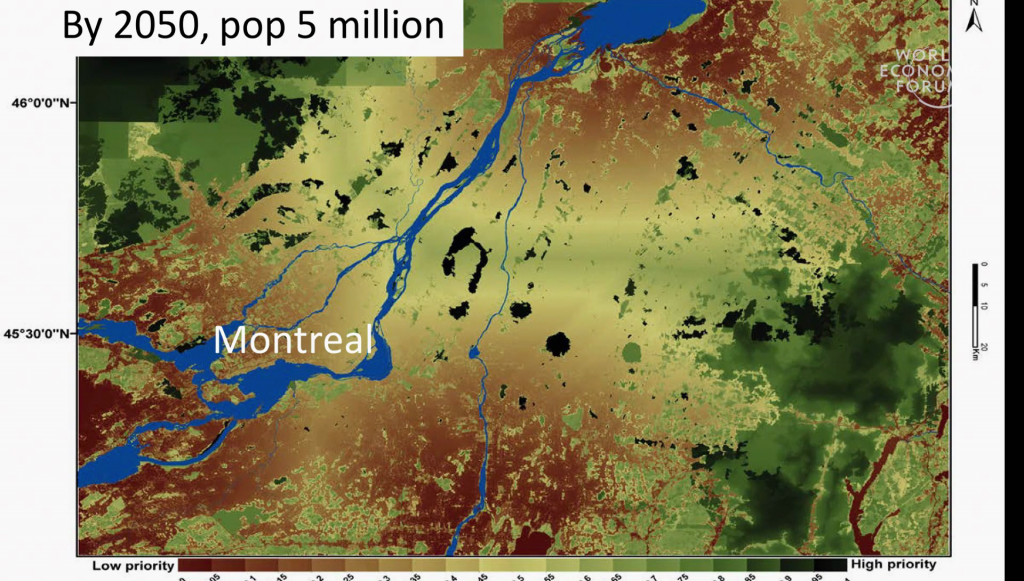
But what will the region look like in 2050? Here I’m showing you a scenario, a business as usual scenario, in which land use change and climate change have continued unchecked. Now you see many fewer dark green fragments, and the region’s ecological connectivity has passed the point of sustainability.
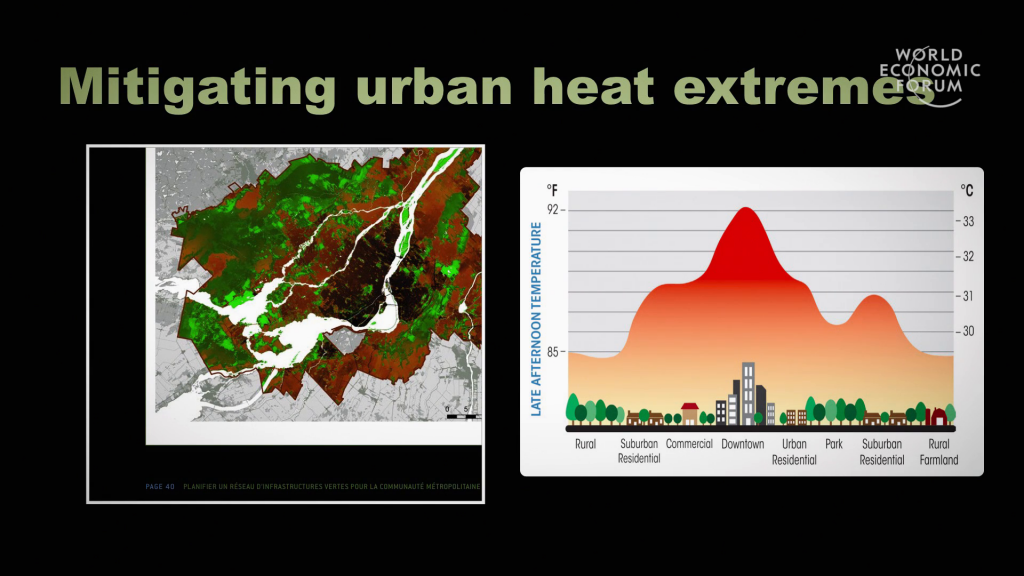
We can also use our methodology to identify ecosystems that contribute multiple benefits. So in this instance, on the left there I’m showing you ecosystems in light green that not only maintain biodiversity but they also mitigate urban heat extremes, which cause fatality in the summer months.
This approach has allowed us to start a new discussion with government, with the city, and NGOs and businesses. Because we can show them that by protecting just 17% of this network, we can maintain 75% of the region’s connectivity. So we’re working with these partners and stakeholders to re-vision the city’s greenbelt as an ecological network.
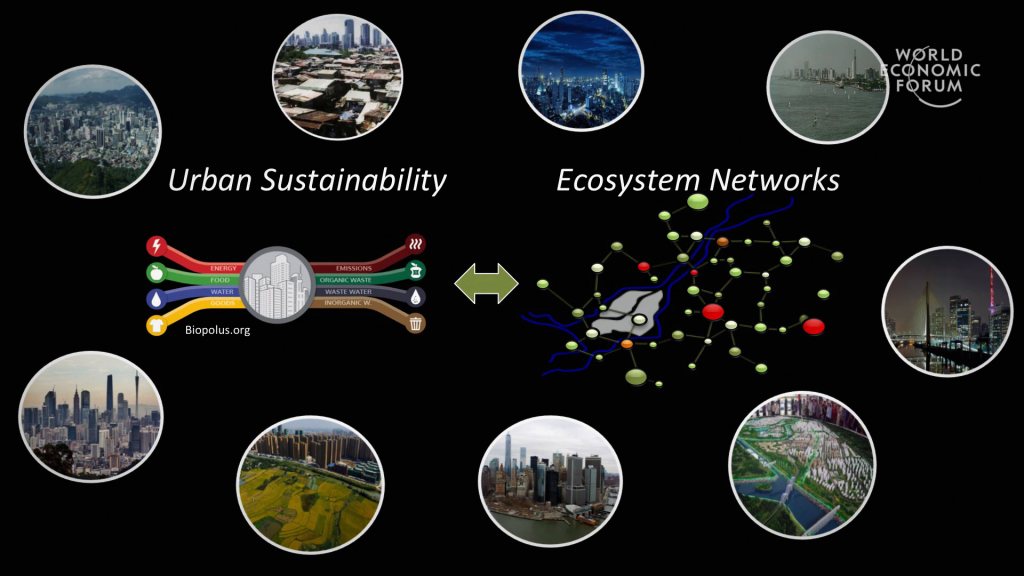
Science like this I think should be applied to any city. That’s my vision. I think we should be exporting this method to any city in any part of the world. Connectivity science and managing connectivity as cities grow will be an essential part of the solutions for urban sustainability in the 21st century. Managing ecological connectivity is one set of the solutions that I think is essential for sustainability, and sustainability ultimately is fundamental to our collective, connected futures. Thank you very much.
Further Reference
Annual Meeting of the New Champions 2016 at the World Economic Forum site
